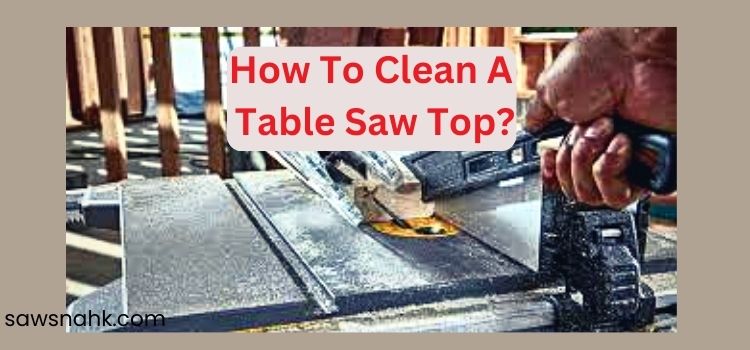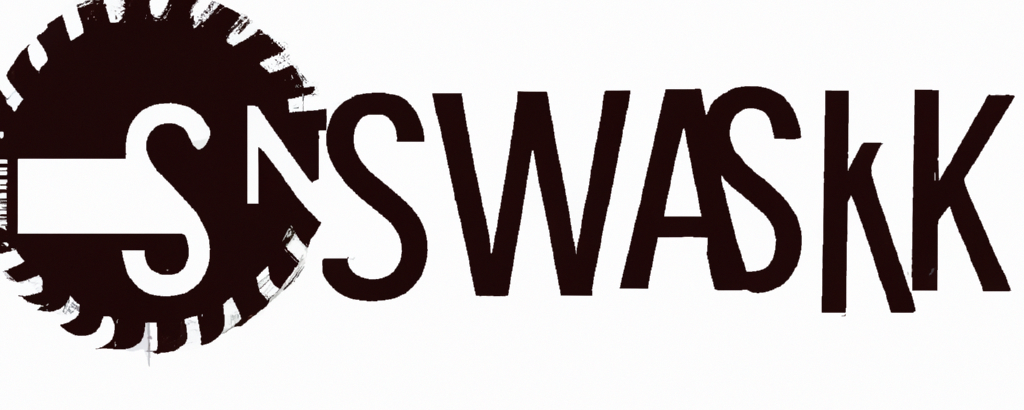How To Clean A Table Saw Top? Step-By-Step Guide

A table saw is a valuable tool for woodworking enthusiasts and professionals alike. Its flat, smooth surface, known as the table saw top, ensures accurate cuts and safe operation. Regular maintenance, including proper cleaning, is essential for keeping the table saw in optimal condition.
In this blog post, we’ll explore the importance of cleaning the table saw top, the different types of sawdust that can accumulate, and provide a step-by-step guide on cleaning it effectively.
What is a Table Saw Top?
The table saw top is the flat, horizontal surface of the saw where the material being cut is placed. It is typically cast iron or aluminum, offering durability and stability. Due to its exposed position during cutting, the tabletop accumulates dust, debris, and sawdust, affecting its performance and accuracy.
Importance of Cleaning a Table Saw Top
Maintaining Accuracy:
Dust and sawdust can interfere with the alignment and precision of the cuts, leading to inaccuracies in your woodworking projects.
Prolonging Tool Life:
Regular cleaning prevents the buildup of corrosive elements that could damage the tabletop, and other saw components.
Safety:
A clean table saw top reduces the risk of kickbacks and accidents, providing a safer working environment.
Types of Sawdust
Table saws can produce different types of sawdust, depending on the materials being cut:
Wood Dust:
The most common type of sawdust is produced by cutting wood. It can vary in texture, from fine particles to larger chips.
Composite Material Dust:
Cutting composite materials, such as plywood or MDF, generates finer and often more powdery dust.
Resin or Chemical-Laden Dust:
Some woods, when cut, release resin or chemicals, which can create sticky or challenging-to-clean residues.
Steps on How to Clean a Table Saw Top
Safety First:
Before starting, ensure the saw is disconnected from the power source to prevent any accidental startup.
Remove the Sawdust Guard:
If your table saw has a removable sawdust guard, remove it to access the entire tabletop.
Scrape Off Loose Sawdust:
Use a putty knife or a wire brush to scrape the loose sawdust gently. Be cautious not to scratch the tabletop surface.
Wipe Down with a Damp Cloth:
Dampen a soft cloth with water and thoroughly wipe down the tabletop. This will help remove finer particles and residues.
Apply a Protective Coating:
To protect the table saw top from future dust accumulation and rust, apply a thin coat of mineral oil or paste wax. Follow the manufacturer’s instructions for the best results.
Tips for Cleaning a Table Saw Top
Regular Cleaning:
Clean the tabletop regularly, especially after heavy-duty projects, to maintain its performance.
Mild Soap and Water:
If the sawdust is particularly stubborn, you can use a mild soap and water solution to assist in cleaning.
Prevent Scratches:
Use the putty knife or wire brush to avoid scratching the tabletop.
Final Wipe Down:
After cleaning, wipe down the tabletop with a clean, dry cloth to ensure it is scorched.
Additional Information: Pro Tips
For particularly challenging cleaning tasks, consider using a commercial sawdust remover, ensuring it is safe for use on your table saw top. Always prioritize safety by wearing gloves and eye protection during the cleaning process. If you are uncomfortable cleaning the table saw top yourself, don’t hesitate to seek the assistance of a professional to maintain your valuable tool.
Conclusion
A clean table saw top enhances the accuracy of your cuts and promotes a safer woodworking environment. By following the step-by-step guide and incorporating regular cleaning into your maintenance routine, you can keep your table saw top free from sawdust and debris, ensuring its longevity and optimal performance.
